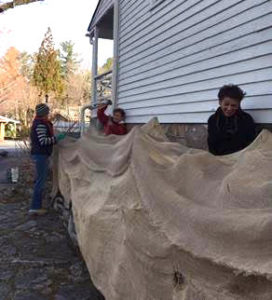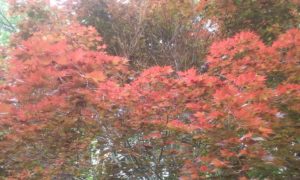Late Season Frosts
go.ncsu.edu/readext?687372
en Español / em Português
El inglés es el idioma de control de esta página. En la medida en que haya algún conflicto entre la traducción al inglés y la traducción, el inglés prevalece.
Al hacer clic en el enlace de traducción se activa un servicio de traducción gratuito para convertir la página al español. Al igual que con cualquier traducción por Internet, la conversión no es sensible al contexto y puede que no traduzca el texto en su significado original. NC State Extension no garantiza la exactitud del texto traducido. Por favor, tenga en cuenta que algunas aplicaciones y/o servicios pueden no funcionar como se espera cuando se traducen.
Português
Inglês é o idioma de controle desta página. Na medida que haja algum conflito entre o texto original em Inglês e a tradução, o Inglês prevalece.
Ao clicar no link de tradução, um serviço gratuito de tradução será ativado para converter a página para o Português. Como em qualquer tradução pela internet, a conversão não é sensivel ao contexto e pode não ocorrer a tradução para o significado orginal. O serviço de Extensão da Carolina do Norte (NC State Extension) não garante a exatidão do texto traduzido. Por favor, observe que algumas funções ou serviços podem não funcionar como esperado após a tradução.
English
English is the controlling language of this page. To the extent there is any conflict between the English text and the translation, English controls.
Clicking on the translation link activates a free translation service to convert the page to Spanish. As with any Internet translation, the conversion is not context-sensitive and may not translate the text to its original meaning. NC State Extension does not guarantee the accuracy of the translated text. Please note that some applications and/or services may not function as expected when translated.
Collapse ▲The local weather forecast is for one more day of possible frost on Saturday night, May 9, 2020. Every year we advise people to wait until after Mother’s Day to plant summer vegetables but it is so hard to resist planting in April when the temperatures are in the 80s!
Maybe we will not get quite as cold as predicted but if you have tender plants you should cover them up. Water in tender leaves can freeze. This causes plant cells to burst killing the leaves.
Use anything you can find to cover your tender flowers or vegetables such as old flower pots, cloth sheets, burlap, plastic sheets, or even covering low growing plants in straw or mulch. Blueberries, blackberries, raspberries, and strawberries should also be covered. Larger fruit trees such as apples should be ok.
So, what do you look for after that frosty night? On sensitive leaves and stems you will see them turning dark or brown and shriveling. Thin juicy stems might have gotten burned and will die back. Flowers on some plants might have turned brown and fallen off.
What to do? There really is not anything you can do to cure cold damage. You can prune out dead branches and other damaged plant parts but that is about it. Remember, it never hurts to fertilize your trees, shrubs, perennial and annual flowers, etc. The fertilizer will boost plant growth and new plant parts will grow into the damaged area. Eventually lopsided plants will balance themselves.






